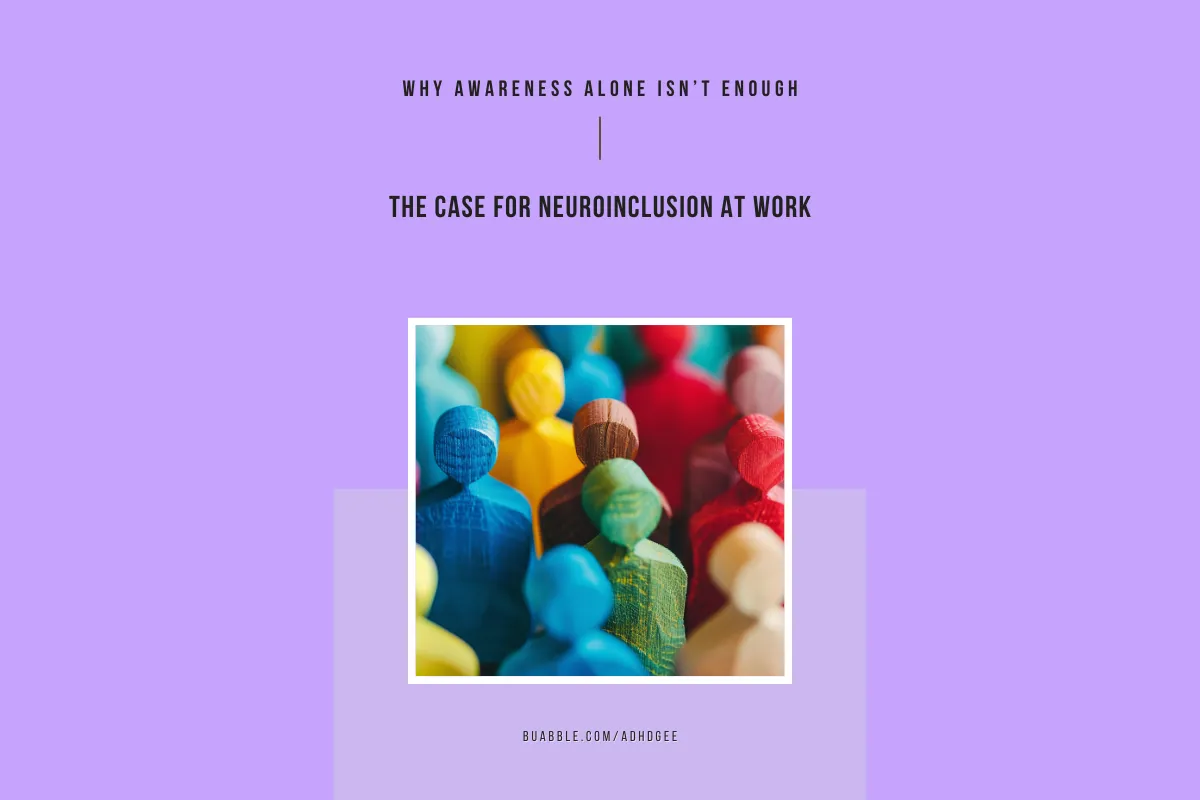
Why Awareness Alone Isn’t Enough: The Case for Neuroinclusion at Work
Why Awareness Alone Isn’t Enough:
The Case for Neuroinclusion at Work.
In recent years, neurodiversity has entered the workplace conversation, and that’s a positive step. More leaders are aware of ADHD, autism, dyslexia, and other cognitive differences. But awareness alone isn’t inclusion.
In many organisations, neurodiversity is still treated like a checkbox. A training session here, a social media post there. While these efforts may come from good intentions, they often fall short of real, sustainable change.
So, what does it take to move from awareness to neuroinclusion?

🧠 Awareness Isn’t the End Goal. It’s the Starting Point.
Awareness says:
“I’ve heard of neurodiversity.”
Inclusion says:
“We’ve changed the way we work so neurodivergent people can thrive here.”
Being aware doesn’t prevent burnout. Awareness doesn’t stop masking. Awareness doesn’t fix hiring practices or performance processes that unintentionally exclude brilliant minds.
🔍 What Real Neuroinclusion Looks Like
Real inclusion shows up in policies, leadership behaviour, and daily team dynamics. It might look like:
Managers normalising flexible communication and work styles
Performance reviews that account for different executive functioning patterns
Interview processes that don’t penalise people for not thinking or speaking in “neurotypical” ways
Leaders being open to conversations about sensory needs, disclosure, and accommodations
Psychological safety that allows people to unmask without fear
These aren’t “special favours”. This is what equity looks like when you center lived experience.
🚩 The Risk of Tokenism
When inclusion efforts stop at awareness, neurodivergent employees are often left to navigate invisible challenges alone. They may feel pressure to “fit in,” avoid disclosing their needs, or overcompensate until they burn out.
Tokenism also breeds resentment. When employees are told they’re included, but don’t experience meaningful change, trust breaks down. The gap between intention and impact becomes a source of harm.
✅ What Organisations Can Do Differently
If you’re in HR or a leadership role, here’s how to go beyond awareness:
Audit your environment and policies.
Is your workplace truly accessible to different cognitive styles?Invest in training with depth.
Go beyond definitions and dive into real-life practices that support neurodivergent employees.Create space for honest feedback.
Ask neurodivergent team members what they need, and act on it.Support your managers.
Give them coaching and tools, not just expectations to “get it right.”
💬 Final Thoughts
Awareness is important, but it’s just the beginning.
If we want to build organisations where everyone can contribute fully, think differently, and belong authentically, we must commit to doing the deeper work of neuroinclusion.
It’s not about being perfect.
It’s about being willing to listen, learn, and redesign the systems we inherited.
👉 Want support bringing neuroinclusion into your workplace?
We offer training, audits, and coaching to help teams move beyond awareness into meaningful, lasting change.
📩 [email protected]
